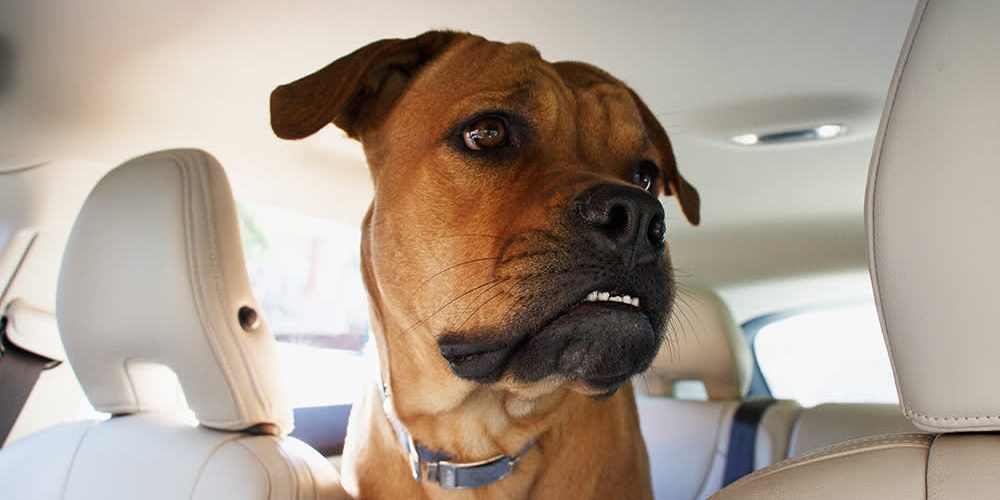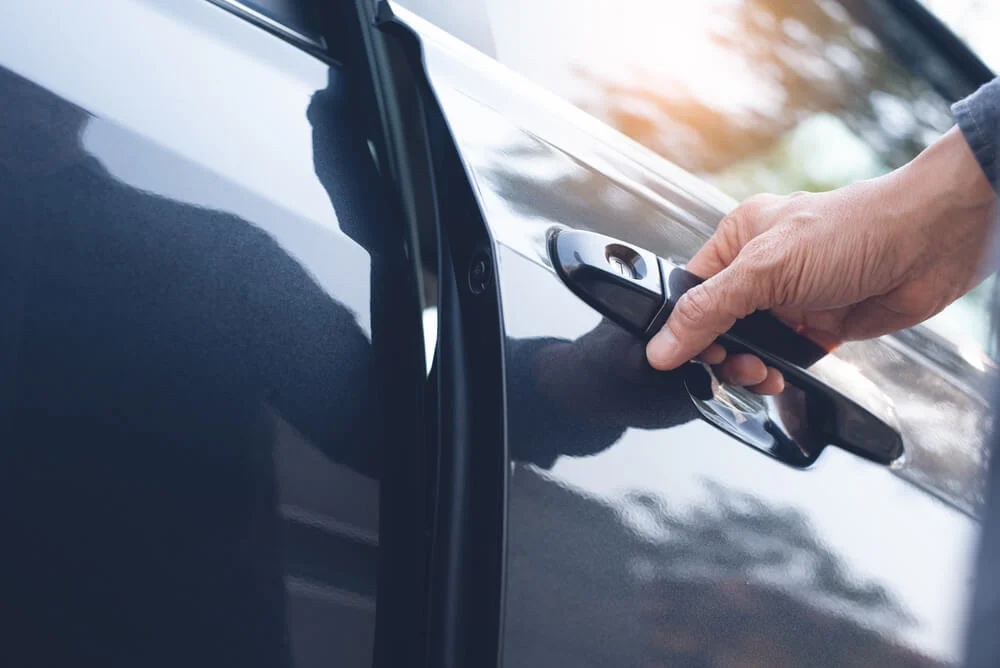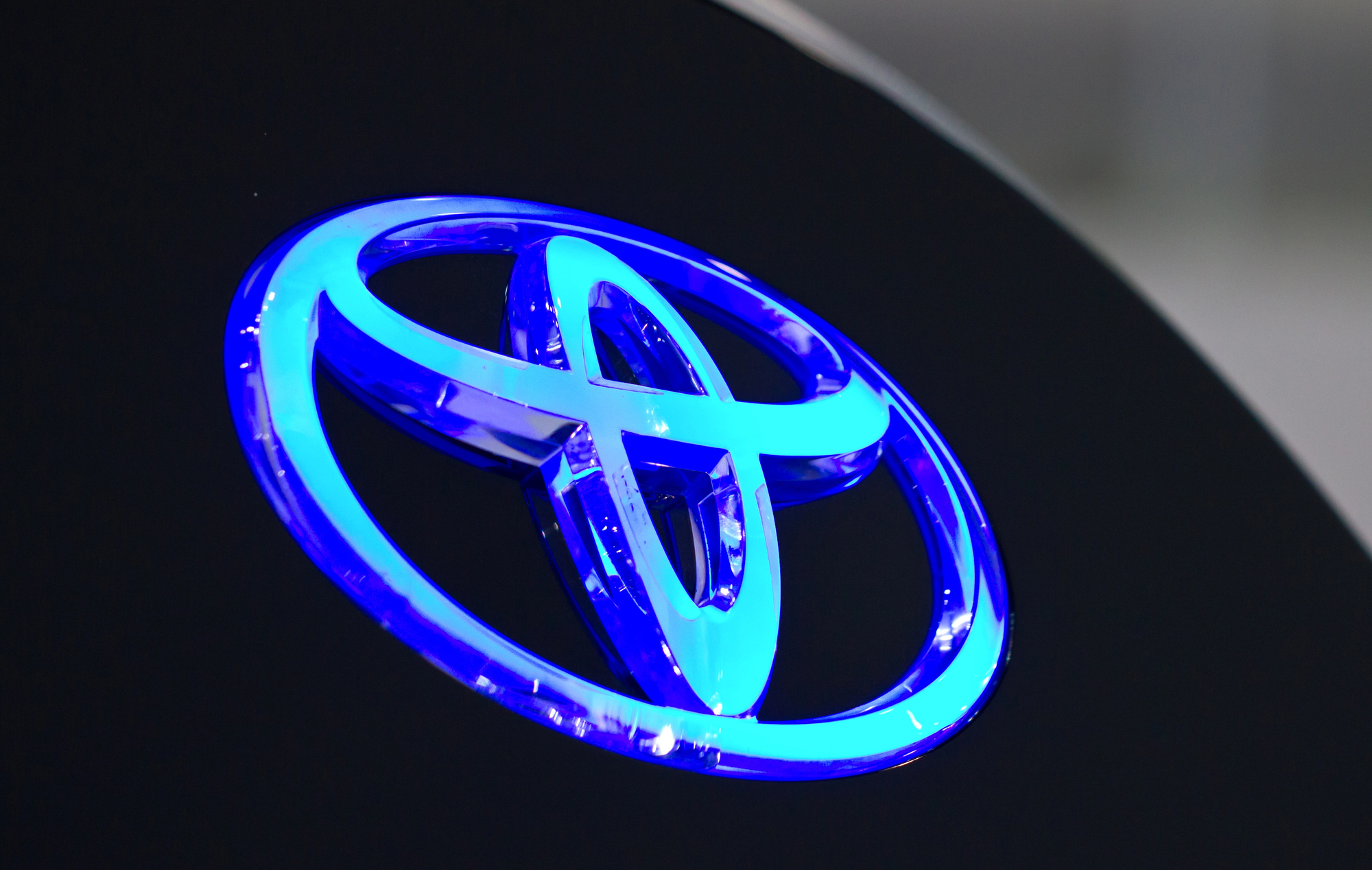Why Does My Dog Whine In The Car


Reasons why dogs whine in the car
Dogs exhibit whining behaviour in cars for various reasons. Anxiety is the primary reason dogs whine when travelling in an automobile. The unfamiliar movements, noises, and sights in cars can be disorienting and distressing for dogs. Additionally, dogs may display separation anxiety when travelling without their owners. They may also whine due to motion sickness or discomfort. Another reason for their behaviour may be because of the excitement of an upcoming destination.
Additionally, owners must identify the cause of their dog’s anxiety to eliminate their whining. Training dogs to feel at ease in cars should begin as soon as possible by taking them on short rides. Creating a pleasant and comfortable environment for them inside the car can be helpful. It is also important to ensure dogs are secure and safe through the use of car restraints while travelling.
Pro Tip: Owners should not rush their dogs into the car; rather, they should introduce them gradually. This helps dogs associate the car with positive experiences and reduces anxiety.
Anxiety and fear
Canine agitation and distress in transit are common causes of dog whining on car journeys. Dogs experience fear and anxiety due to unfamiliar surroundings, motion sickness, past traumas, or separation. These factors raise their stress levels and contribute to whining.
Dogs can show behavioural changes when travelling in cars if they feel anxious or fearful. They may pant excessively, drool more than usual, have dilated pupils, become restless or agitated, or even show signs of aggression. Anxiety and fear-induced whining serve as a vocal response to stress for dogs.
Pet owners can try several strategies to alleviate canine anxiety. One method is to gradually acclimatise their dog to the car by taking them on short trips frequently. Another approach is using calming products like pheromone sprays or natural remedies like camomile supplements. For severe cases, seeking advice from a veterinary behaviourist may be necessary.
Car sickness
Dogs exhibit various actions while travelling in a car; one of them is car sickness. This condition is an ailment common to many canines, and it arises as a result of the irregular movement that occurs when the vehicle moves on roads. It can cause discomfort and unease for your pet throughout the journey. The symptoms include whining, vomiting, shaking, increased drooling, and dry heaving.
The most apparent reason for a dog’s whining in the car is due to its feeling of discomfort caused by car sickness. The motion of vehicles causes their balance systems to be disturbed, leading to an upset stomach. Once this has occurred, dogs often express discomfort through vocalisations like whining or barking.
To minimise your dog’s discomfort on long journeys, it is advisable to prepare well before embarking on such trips. Ensure that your dog gets used to being in a moving vehicle by taking shorter trips, starting with shorter distances, and increasing gradually.
Additionally, it is essential to ensure proper ventilation in the automobile and avoid feeding the canine before travel until they get used to the moving car’s environment completely. Visit your vet, who may recommend medications or better ways of minimising car sickness around your dogs.
Overall, it helps significantly if you understand why dogs whine while travelling in automobiles because, as their owner or handler, consistent care needs are paramount. Extra attention must be given during these times, as reassuring your canine friend could help reduce anxiety levels since pets thrive on consistent behaviour patterns.
Do not let another journey create anxiety for you and your four-legged companion; take action early regarding managing motion-induced sickness!
Excitement and anticipation
Dogs often express enthusiasm and expectation when riding in the car with their owners, eliciting a variety of vocalisations. This is likely a result of the dog anticipating enjoyable activities or new experiences associated with car rides.
Moreover, dogs may interpret owner excitement regarding car trips as a cue to become equally excited themselves, leading to whining and other vocalisations. Additionally, dogs may also whine due to anxiety or frustration if the car ride does not meet their expectations.
Interestingly, some dogs may whine more if they are unable to view outside scenery or experience unfamiliar smells during their car rides. As such, providing ample opportunities for visual and olfactory stimulation can minimise whining.
One solution to reduce your dog’s car ride barking is to take them for short drives frequently, as it makes them used to it while keeping long drives initially for rare travels. It is also good to train your puppy by giving small treats while driving so he follows the trained command, ‘silent’, which helps in controlling his over-excitement.
Lack of exercise and stimulation
Dogs may whine in the car due to a lack of physical activity and mental stimulation. Depriving them of opportunities to exercise and engage in interaction with other dogs or humans could cause boredom, which is often expressed through whining. Additionally, since dogs have a heightened sense of hearing and smell, they may be overstimulated by the sights and sounds of being in the car. This can make their whining even worse.
To address these issues, owners should ensure their dogs receive ample exercise before going on drives. Interactive playtime and training that involves active engagement can also keep them stimulated mentally. If a dog is prone to anxiety, playing calming music or using pheromone sprays in the car can reduce stress levels.
It’s essential to remember that each dog has a unique personality and needs. While some might view car rides as thrilling or comforting, others might find them overwhelming or scary. By understanding their body language and cues during rides, owners can identify stress triggers quickly.
A friend’s Golden Retriever disliked going on long car rides with his family. The owner tried providing chew toys and snacks but couldn’t stop him from constantly whining throughout the journey until the pup was allowed to take short breaks every 20 minutes or so. After this change was made, the dog became a happy traveller who slept soundly during more extended journeys.
Unfamiliarity with car rides
Dogs may whine in the car due to a lack of familiarity with car rides, causing fear and discomfort. The unfamiliar sound of the engine, sudden movements, and different surroundings can also contribute to their unease. This anxiety may lead to whining as an attempt to express their distress.
To alleviate their nervousness, some dogs may benefit from exposure therapy and short practice drives. Using calming aids such as pheromone sprays or music can also help put them at ease. It’s crucial to make the vehicle comfortable for your dog by providing adequate ventilation and ensuring that the temperature is suitable.
Additionally, it’s essential to keep your dog restrained via a harness or carrier during the ride for their safety and yours. Loose dogs in the car can fall into dangerous situations during sudden stops, turns, or accidents.
Studies show that dogs’ stress levels can be reduced by playing classical music during car rides. A Colorado State University study concluded that playing specific types of tunes (including “Adagio for Strings” by Barber) reduced stress levels in canines during veterinary exams.
Tips to help reduce or eliminate whining in the car
It is common for dogs to whine in the car, and it can be a potential distraction while driving. Here are some useful insights to help reduce or eliminate this behaviour:
- Establish Familiarity: Create a positive association between the vehicle and your dog by taking them on short, comfortable trips before embarking on longer ones. Touch and smell stimuli can calm dogs, so provide them with a familiar blanket or toy to make them feel secure.
- Breaks and Exercise: Dogs can readily get anxious when kept in enclosed spaces for long periods. Regular breaks for stretching, potty breaks, and a little exercise can go a long way in reducing anxiety and whining.
- Comfortable Seating: Providing comfortable and secure seating arrangements for your furry friend can help ease anxiety and discomfort. Properly restrain your dog in the car using a crate, pet seat belt, or harness to prioritise road safety.
- Creating a Calm Environment: Engage your dog with calming music or the sound of white noise to help them relax in the car. Avoid playing any stimulating music, as it may lead to excitement and further whining.
- Car Sickness: Underlying health conditions or car sickness can also cause a dog to whine in the car. Speak to your vet to determine any underlying health problems and potential solutions.
- Positive Reinforcement: Keep a stash of treats handy to praise, reward, and distract your dog from whining.
Remember, every dog is unique, and what works for one may not work for another. Be patient and understand your dog’s behaviour to find out what helps them cope with car travel.
It is essential to note that excessive whining in dogs can be a sign of underlying stress and anxiety. Consult with your vet if your attempts to ease your dog’s anxiety prove unsuccessful.
Understanding your dog’s behaviour and implementing tried-and-tested methods can help reduce or eliminate whining in the car. It is crucial to prioritise road safety and create a panic-free environment for your furry friend.
Gradual exposure to car rides
Acclimatising babies gradually to car commutes can help reduce or eliminate their whining. Begin with short trips and progressively increase the duration and frequency of the rides. Consider packing comfort items, like toys or blankets, and soothing tunes to establish positive associations with the experience.
Furthermore, keep a quiet car environment and avoid distractions that could cause discomfort or distress. The auditory and visual stimulants should be minimal, if any at all.
During these gradual exposure activities, make sure your baby is comfortable! The temperature in the vehicle should be adjusted accordingly as well.
One vital detail to note when introducing driving to a newborn is that it can be a little different from when they were in the womb since they don’t feel their body being carried anymore. Therefore, it’s essential to be understanding and patient with them throughout the process.
True History:
A friend shared how he would take his daughter on scooting journeys before graduate exposure worked for her; eventually, it did work for an enjoyable ride. He mentioned that even though earplugs seem helpful initially, a child’s ear sensations pick up low-frequency noise louder than adults’, so rather than chancing and hurting his daughter’s hearing, calming music proved more reliable.
Creating a comfortable and safe environment in the car
A safe and pleasant ambience in the car is crucial while travelling with family. Implementation of useful tips can make a world of difference in creating a conducive environment. Keeping children engaged with meaningful activities, providing necessary amenities, such as food and water, and playing soothing music are helpful techniques that can be used.
There are several ways to avoid constant whining during car trips. Organising games, puzzles, or books for children is one way of keeping them occupied. Ensuring their comfort level by using cushions or seat pads is another key factor. Additionally, carrying snacks and drinks for them helps maintain blood sugar levels that keep irritability at bay.
It’s beneficial to take frequent breaks on long car journeys. This helps refresh both the minds and bodies of passengers. It also allows exploration of new surroundings, which not only breaks monotony but also adds excitement to the journey.
Don’t let complaining become a constant distraction during travel! Implement these tips to proactively create an enjoyable experience for everyone involved.
Using calming aids such as music or pheromone sprays
Using Relaxing Tools to Minimise Whining in the Car
Whining children in the car can make for a stressful drive. However, there are several ways to calm children down during car rides. One of the most effective ways is by using relaxing tools such as music or pheromone sprays.
Here are five ways that music and pheromone sprays can help calm your child while driving:
- Music can have a soothing effect on your child’s mood and reduce their anxiety levels.
- Pheromone sprays work by mimicking the scent produced naturally by animals. This scent helps to increase feelings of relaxation and reduce anxiety levels.
- You can create a customised playlist of calming songs that your child enjoys listening to.
- Pheromone spray is easy to use and can be applied directly to your child’s clothing, car seat, or even sprayed into the car air conditioner vents.
- Both methods are non-invasive and have been successfully used by parents worldwide to reduce stress and minimize whining during car rides.
It’s also worth noting that many children will have different preferences when it comes to which type of music they find calming. Similarly, not all pheromone sprays will work well for every child. Experimentation is key when it comes to finding what works best for your family.
If you’re still having trouble with whining in the car, consider talking with other parents who have dealt with similar issues. They may have additional tips or tools that could help improve the situation.
A tired dog is a happy passenger, but be careful not to tire them out too much, or you may end up carrying them to the car!
Ensuring the dog has had adequate exercise before a car ride
Exercise Prep for a Peaceful Car Ride with Your Dog
To ensure your dog is calm and relaxed in the car, follow these steps to prepare them with appropriate exercise before any car trip.
- Make sure to engage your dog’s body and mind throughout the day with aerobic activity.
- Before heading on a car ride, take your dog for a walk or run.
- Prepare mentally stimulating activities to involve your pup after their outdoor exercise is complete.
- If you’re short on time, consider using an interactive toy like a puzzle feeder.
- Last but not least, give your furry friend time to cool down and relax before hopping in the car.
In addition to physical benefits, this exercise will increase endorphins in the brain and change your dog’s emotional state. These small habits can make all the difference when it comes to reducing whining during travel.
As always, safety should be at the forefront of pet travel. Keep proof of vaccinations up-to-date and adhere to basic safety precautions, such as always using harnesses and crates while driving.
Pet-friendly travel starts with taking extra care and planning accordingly for both long and short journeys!
Seeking professional help if necessary
If the above tips fail to alleviate whining in the car, consulting a specialist in child behaviour may be advantageous. A professional can recognise underlying behavioural problems and suggest tailored strategies to cope with them. Seek out trusted recommendations or read reviews before making an appointment to ensure that you are getting high-quality service. Remember, it is okay to ask for help if you need it.
In some cases, seeking guidance from a therapist may be necessary to manage difficult behaviours in children. Behavioural therapists are trained professionals who use specialised techniques and tools to improve children’s behaviour. They will take the time to identify the root cause of a child’s whining and offer solutions that are unique to their needs. Following through with therapy sessions and implementing suggested strategies can significantly decrease whining.
It is essential to note that not all behavioural problems require professional attention. While it’s always better to be safe than sorry, parents shouldn’t feel guilty if they cannot seek treatment for any reason. With patience, consistency, and firm boundaries, some attitudes can improve on their own over time.
A dear friend of mine was having a hard time keeping her three-year-old son from constantly crying in the car seat during long trips. After trying advice from friends and online forums with little success, she admitted defeat and made an appointment with a therapist specialising in early childhood development. The sessions helped her to understand what triggers her child’s fussing and provided strategies such as frequent stops for stretching legs or a reward system-based respite when he cooperated well on long rides.
Travelling with dogs can be rough, but taking safety precautions will prevent any paw-sible accidents!
Safety precautions to take when travelling with dogs
Travelling with your furry companion is always an enjoyable experience, but it’s crucial to ensure the safety and comfort of your pet. Here are some essential safety measures to take when travelling with dogs.
Essential safety measures to take when travelling with dogs:
- Secure your dog: Use a safety harness or a carrier to confine your dog to one place while travelling. Avoid letting them roam free and sit on your lap while driving.
- Hydration and Food: Carry enough water and food, preferably in spill-proof dishes, for your furry friend. Ensure they have access to water at all times, and feed them small portions during pit stops.
- Health Check-ups: Visit a veterinarian before travelling, get all necessary vaccinations, and carry any medication they need. Keep their medical records and a first-aid kit handy.
- Pleasure Breaks: Take breaks often to ensure your dog can relieve themselves, stretch their legs, and enjoy the new environment.
Always monitor your dog’s condition when travelling, and keep a watchful eye on your pet’s behaviour. Be alert for any signs of unease, car sickness, or distress in your dog. Remember, your pet’s comfort and safety should always be a priority.
A few years ago, a family travelling with their dog did not follow these safety measures and let their pet sit on the driver’s lap. A sudden movement caused the dog to interfere with the driver’s control, leading to a life-threatening accident. It was only after this incident that the family realised the importance of securing their pet while travelling.
Even dogs know the importance of wearing seatbelts, so buckle up your furry friend for a safer, less whiny ride.
Securing the dog in a crate or with a seatbelt harness
Securing your furry companion during travel is imperative. Here’s how to guarantee their safety:
- Utilise a crate or a seatbelt harness to prevent the dog from wandering around inside the vehicle while moving.
- Ensure that the crate fits snuggly in the back, and use proper fasteners to prevent it from sliding around while driving.
- Seatbelt harnesses aid in securing dogs to car seats, restricting their motion, and keeping them safe during sudden stops and accidents.
- Always test the devices at home before embarking on long journeys, so you are confident that they work appropriately for your dog.
- Don’t forget to take off any loose objects near your dog when he or she is in a seat or a crate, as these may cause injury if an accident occurs.
Moreover, make sure that your pet has ample ventilation and is comfortable inside their crate. No matter how tempting it might be for your little buddy to nap freely during road trips, their protection is paramount.
A friend once recounted how she searched when her lost dog managed to wriggle out of his ill-fitting harness and run away on a busy street while on vacation. She vowed never to disregard securing her dogs properly based on their disconcerting experience.
Avoiding leaving the dog alone in a parked car
When travelling with your canine companion, it’s important to avoid leaving them alone in a parked vehicle. This poses a significant danger as temperatures can quickly rise inside the vehicle, leading to heatstroke, dehydration, and ultimately death. Instead, consider leaving your dog with a trusted friend or using pet-friendly accommodations.
It’s also important to plan, making sure your destination offers suitable conditions for dogs. If you must leave your dog in the car due to unforeseen circumstances at any point during the trip, ensure that there is adequate ventilation and access to fresh water. However, it is highly recommended that you avoid this situation altogether.
When it comes to navigating unknown territory with your furry friend, safety should always come first. By taking the necessary precautions, such as not leaving pets unattended in parked cars, you can ensure a successful and enjoyable trip for both you and your pooch.
I once met an owner who left her beloved pup in the car during a quick stop at a gas station. Unfortunately, she returned to find her dog had suffered from heat exhaustion, which resulted in an expensive vet bill and almost a loss of life. Don’t let this happen to you or your pet; take all necessary steps to ensure their safety while travelling together.
Bringing water and food for the dog on longer trips
For extended journeys with your canine companion, it is essential to provide adequate nutrition and hydration. Ensuring water and food supplies for your four-legged friend can add an extra bit of safety on longer trips.
- Bring plenty of water: It is crucial to keep your dog hydrated while travelling so that they do not become dehydrated. Carrying water in a spill-proof container is very necessary.
- Pack the right food: Your dog requires regular meals while travelling, so it’s better to pack enough dog food and snacks based on their diet plan and bring some backup options too if needed.
- Cater to their feeding needs: Dogs need time and space to eat, so make sure you will cater to their feeding needs accordingly.
Additionally, ensure you have provided an ample amount of food as per hunger demands; overfeeding or underfeeding them can result in health issues or discomforts.
Keeping a few handy travel supplies like paper towels, disinfectant, and collapsible bowls would also come in handy. Once these things are sorted out, covering all the important aspects regarding bringing water and food for dogs on more expensive trips can be accomplished effortlessly.
True History: A few years ago, my friend went on a road trip with her dog without carrying his regular meals, not realising the consequences involved. As she reached her destination after miles away from home, searching for suitable pet stores became very troublesome as she did not know nearby areas well, which ultimately resulted in unbalanced meals, leading him to become sick throughout the journey.
Plan frequent breaks for the dog to stretch and relieve itself
Dogs require time to stretch and relieve themselves while travelling. Here are some steps you can take to plan frequent breaks for your furry friend during your travels:
- Set a schedule: Prepare a travel timetable that includes designated times for stopping and allows your dog to stretch its legs.
- Research rest stops: Look up pet-friendly rest areas, parks, and green spaces along your route ahead of time.
- Pack water and food: Bring enough food, water, bowls, and treats for the journey.
- Car safety: Use a car harness or carrier when moving your dog between the car and other areas, preventing the risk of getting lost.
- Be mindful of weather conditions: Avoid hot temperatures during midday; instead, opt for early morning hours or late afternoon walks when pet walking is allowed.
It’s also crucial to supervise your dog at all times throughout the trip. Besides that, provide plenty of hydration, as pets can easily get dehydrated on long journeys.
To give you an idea of why regular breaks are essential, I recall taking my dog on a 6-hour road trip without taking timely breaks. The moment we arrived at our destination, we found out that our furry friend had developed serious arthritis in his hips from being slumped in the vehicle seat for too long. Since then, I’ve learned firsthand why planning frequent break stops is vital to ensuring our pets’ overall health and well-being while travelling.
Being prepared for emergencies, such as car accidents or sudden illnesses
Preparing for unexpected situations during travel with furry friends is essential. Here’s how to ensure that you and your dog are ready for emergencies such as car accidents or sudden illnesses:
- Pack a first-aid kit specifically for your dog. The kit should include basic supplies, such as bandages, scissors, tweezers, antiseptic cream, and medicine.
- Microchip your canine companion, and make sure the contact details are up-to-date. A collar with proper identification also enhances the chances of reuniting with your dog if it is lost.
- Follow car safety rules and secure your dog in a comfortable harness that fits them well. Crates are also an option.
- Research the nearest veterinary clinics along the way before travelling to avoid any last-minute surprises. Save their necessary contact numbers.
- Carry enough food, water, and bowls for both you and your furry friend in case of delays or rest stops.
- Have a plan of action in case of emergencies; consider having pet insurance to have an extra layer of protection.
Additionally, it is always good practice to know the laws related to travelling with dogs to avoid any unpleasant incidents.
An anecdote from Rachelle Kantrowitz recounts how she got into a car accident during her travels with her dog. She had meticulously planned everything from lodging arrangements to packing essentials but hadn’t thought about what would happen if something went wrong while driving with her pooch. The accident resulted in no physical harm to either party; however, Rachelle learned an important lesson: planning for the worst can bring peace of mind during unforeseen circumstances.
Training exercises to desensitize dogs to car rides
To effectively train dogs to overcome their fear or anxiety related to car rides, certain exercises can help desensitise them to the experience. These exercises involve gradually increasing exposure to cars and car rides over time, using positive reinforcements, and creating a comfortable and secure environment for the dog.
- Start with short car rides in a parked car, gradually increasing the time spent in the car.
- Use positive reinforcements, such as treats and praise, during each session.
- Teach the dog to associate car rides with positive experiences, such as going to the park or for a walk.
- Gradually increase the car’s movement, starting with idling for short distances and gradually moving to longer distances.
- Ensure the dog has a comfortable and secure space in the car, such as a crate or a harness.
- Practice regularly and consistently to reinforce the training and build the dog’s confidence.
To make the training effective, it is essential to follow the dog’s pace and not push them beyond their comfort level. Each dog is unique and may require different training strategies.
It is important to remember that the process requires patience and consistency, and it may take some time before the dog is entirely comfortable with car rides. By using positive reinforcement and gradually increasing exposure to car rides, the dog will develop a positive association with the experience, making future car trips a more enjoyable experience for both the dog and the owner.
In true history, a dog owner with a fear of being in a car rode in the passenger seat while their dog drove the car for a short distance. The owner’s fear was irrational, and the experience was a humorous but effective way of desensitising the dog to the car.
Gradual desensitisation to the car and car rides
The process of sensitising dogs to car rides may provide effective strategies for pet owners with anxious pets. Gradual desensitisation exercises consist of preparing dogs for a ride, helping them associate their journey with pleasant experiences, and gradually increasing the duration of rides. This method can effectively reduce anxiety in pets over time.
For best results, a few tips are essential when embarking on this training programme. These include ensuring the dog is comfortable with the crate, making it fun and exciting by providing treats during the process, and avoiding trigger points that lead to anxiety.
Unique details include starting small with trips around the block before progressing to more extended journeys, introducing calming music during the drive, and speaking in soothing tones.
Recent reports have shown that dogs who undergo this type of behaviour modification programme display fewer signs of anxiety compared to those who haven’t undergone any training. The bond formed between owner and pet increases as trust and security grow stronger through these techniques.
Positive reinforcement training to associate car rides with positive experiences
When it comes to getting your pet accustomed to car journeys, reinforcing their positive association with the experience is key. By using rewards and incentives for good behaviour, you can create a sense of comfort for your furry friend, promoting safer and more relaxed travel. Here is a simple 6-step guide to positively reinforcing dogs about car journeys:
- Begin by creating a comfortable setting within the vehicle, encouraging your pet to associate the space with relaxation.
- Gradually introduce short journeys, offering praise and treats whenever they remain calm and settled during transit.
- Regularly repeat these shorter trips to build up your dog’s confidence over time.
- If necessary, use calming products such as special jackets or sprays to soothe any anxieties that arise during rides.
- Incentivize longer excursions by introducing new toys or other sensory distractions that quell restlessness during prolonged periods spent on the road.
- Finally, continue reinforcing positive associations with regular reward systems throughout each journey. Remember, too, that consistency is key—keep travel routines as predictable as possible to minimise stress for your pet.
By implementing these steps effectively, dogs can learn to enjoy car rides and alleviate associated anxiety. It’s important to avoid forceful methods such as punishment or restraint when trying to desensitise animals towards travel; instead, using positive reinforcement enables pets to emphasise their comfort zones while promoting safe travel.
For dog owners who struggle with homing pets comfortably throughout transit across extended periods due to constraints in their working routine, several tools like dog car harnesses are available that help retain pets comfortably throughout their travels. Other solutions, like barriers, also function well if multiple pets are travelling together.
One of my friends had a golden retriever who always feared riding in cars until his owner started gently incorporating occasional short drives that included favourite activities like walks and rewarding the dog with treats when he remained calm. Before long, there was a very different reaction to the car, where the dog started to look forward to this time with his owner and even began voluntarily jumping in on occasion for impromptu trips.
Counter-conditioning to change the dog’s emotional response towards car rides
Dogs often find car rides distressing and even terrifying. Counter-conditioning techniques can be used to change the dog’s emotional response to car rides by replacing negative emotions with positive ones. Here’s how:
- Start with a calm environment.
- Introduce the dog to the car while it is stationary.
- Gradually increase the time spent in the car, using positive reinforcement such as treats and praise.
- Take short trips around the block or a nearby park, gradually increasing the distance and duration of the rides.
- Keep sessions short, frequent, and consistent until your dog becomes comfortable with longer car journeys.
Remember that training should never be forceful or punishing and should always be based on positive reinforcement.
To further help your furry friend enjoy their journey, you may consider providing them with a comfortable crate or harness seatbelt for safety purposes.
When counter-conditioning your dog to change their emotional response towards car rides, patience must be exercised throughout this process. Overcoming this fear may take time, but it is possible through consistent repetition of training exercises.
It’s important to understand that every dog has an individual temperament and response to different situations. Therefore, these techniques may not work in some cases, and professional help may be necessary.
One dog owner we spoke to tried these techniques and saw great improvements in her furry friend’s behaviour towards car rides over time. However, she mentioned that patience was key, as there were instances when progress seemed minimal before eventually reaching success.
Habituation through repetition and consistency
To habituate dogs to go on car rides, it’s essential to repeat and be consistent with the training exercises. This involves gradually increasing the duration and frequency of car rides while reducing stressors, which include unfamiliar sounds, smells, or sights. By doing so, dogs will become accustomed to car rides and develop a positive association with them.
It’s also important to combine repetition with positive reinforcement techniques like rewards and praise. This will help reinforce good behaviour during the training process. Consistency is key as well, ensuring that every training session is conducted in the same way at regular intervals.
To effectively desensitise dogs to car rides, trainers must also ensure that they expose their animals to various situations on each trip. This includes varying the terrain, speed bumps, sharp turns, and stops or starts along different routes.
One dog owner who struggled with their pet’s car anxiety tried a range of techniques over time before finally succeeding with consistent training using praise and treats. By slowly building up exposures while keeping things calm and positive, the dog’s anxieties dissipated over time.
Seek professional help if necessary.
If canine anxiety towards car rides persists even after trying various training exercises, seeking professional guidance is recommended. Professional trainers are equipped with the expertise to identify and address your dog’s specific needs to ensure their comfort during car rides. Additionally, veterinarians can prescribe calming medications or recommend therapies that complement behavioural and training exercises.
It is vital to note that seeking professional help does not imply a failure to train your dog. Instead, it indicates understanding and prioritising your furry friend’s mental health needs. While seeking professional help may incur additional costs, it saves you money and time in the long run.
Besides, some dogs require specialised care beyond general behavioural training. Professionals with extensive experience or certifications in dealing with canine anxiety during car rides will offer such services, relieving both the dog owner and the pet of future stress.
Incorporating positive reinforcement techniques when conditioning your dog for future car rides helps them build trust over time. Introduce short car trips gradually while rewarding calm behaviour using treats and verbal affirmations.
By contrast, introducing an anxious pooch directly into extended road trips will worsen their already existing condition rather than helping them adjust better to future car journeys. Take breaks during long drives for toilet breaks or stretching exercises; additional practices like leash laws and rules apply; always give priority to canine safety and well-being.
Why Does My Dog Whine In The Car – Conclusion
Deducing the reason behind your canine whining in the car, you might be surprised to learn how common this behaviour is. Dogs do not understand the concept of cars, and they may develop anxiety due to motion sickness or fear of unfamiliar surroundings. Additionally, some dogs whine as a way to vocalise their discomfort.
When it comes to resolving this behavioural issue, there are several methods for addressing your dog’s whining while travelling in a vehicle. First, it’s essential to ensure that your canine is comfortable and happy before getting into the car. Familiarise them with travel by taking shorter trips and providing plenty of praise and rewards.
Moreover, you could introduce alternative distractions like toys or treats during car rides or crate-train your dog before travelling. Reducing stimuli can be useful in reducing anxiety and keeping your pet relaxed during transit.
Lastly, attending training classes can help owners learn techniques for controlling their dog’s behaviour while travelling in vehicles. Overall, understanding why dogs whine in cars can help deal with anxiety-driven experiences that are more manageable than you think with patience and good training practices.
Why Does My Dog Whine In The Car – Frequently Asked Questions
Q: Why does my dog whine in the car?
A: Dogs whine in the car for a variety of reasons. They may be anxious, scared, or car sick. It could also be that they are not used to the sensation of being in a moving vehicle.
Q: How can I keep my dog calm during car rides?
A: To keep your dog calm during car rides, try practicing short car trips and gradually increasing the time. Provide your dog with their favourite toys and treats to help them associate the car with positive experiences. Consider using a dog seat belt or crate to keep your pet safe and secure.
Q: Can I give my dog medication to calm them during car rides?
A: It is best to consult with a veterinarian before giving your dog any type of medication to calm them during car rides. Some over-the-counter and prescription medications can be helpful, but it is important to use them correctly and under the guidance of a professional.
Q: Is it safe to let my dog stick their head out of the car window?
A: No, it is not safe to let your dog stick their head out of the car window. Your dog could easily be injured by flying debris or accidents, and they may be more prone to car sickness when their head is out the window.
Q: How can I tell if my dog is experiencing car sickness?
A: Signs of car sickness in dogs include excessive drooling, vomiting, uneasiness, and whining. Your dog may also become lethargic or refuse to eat or drink. If you suspect that your pet is experiencing car sickness, talk to your vet about possible solutions.
Q: Can I train my dog to enjoy car rides?
A: Yes, with patience and training, you can help your dog learn to enjoy car rides. Start with short trips and gradually increase the time in the car. Be sure to provide plenty of positive reinforcement, such as treats and praise, for good behaviour. Consider playing calming music or using essential oils to create a relaxing environment in the car.










